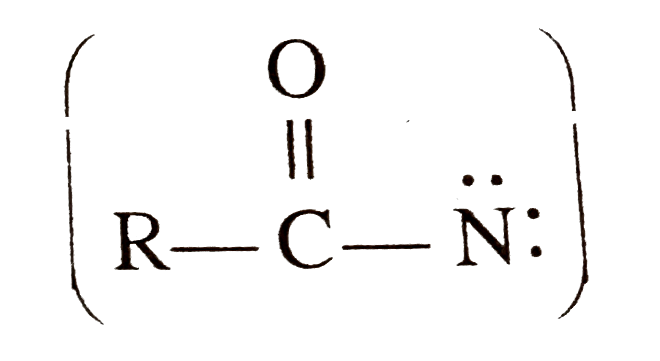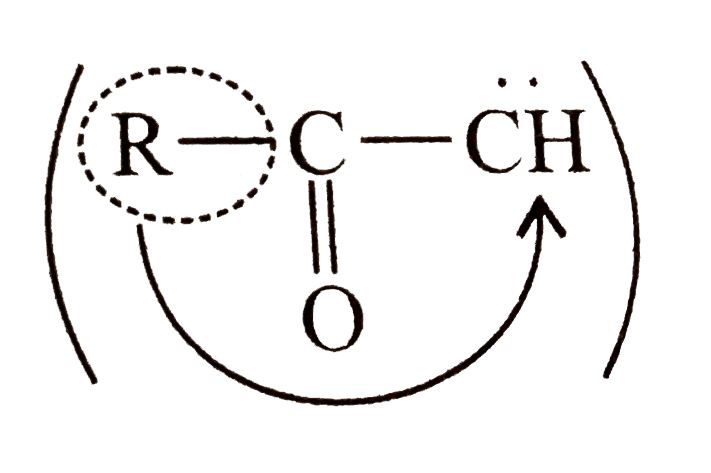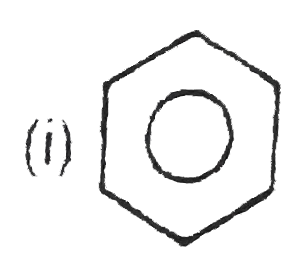In which of the reactions, there is a migration of alkyl group to carbene (..CH2), i.e., rearrangement occurs ?




The correct Answer is:A, B, C
The reaction (a) is Arndt-Eistert reaction.
The reactions (b) and (c) are Wolff rearrangement reactions.
The reaction (d) is Hofmann bromamide rearrangement reaction.
It involves acylnitrene intermediate  and migration if alkyl group to N atom occurs to form (R−N=C=O)
and migration if alkyl group to N atom occurs to form (R−N=C=O)
(a,b,c) involves the formation of 
intermediate in which R migrates to carbene to form R−CH=C=O.
Topper's Solved these Questions
- ORGANIC REACTION MECHANISMBOOK - CENGAGE CHEMISTRYCHAPTER - ORGANIC REACTION MECHANISMEXERCISE - Single correct
50 Videos
- ORGANIC REACTION MECHANISMBOOK - CENGAGE CHEMISTRYCHAPTER - ORGANIC REACTION MECHANISMEXERCISE - Assertion-Reasoning
12 Videos
- ORGANIC REACTION MECHANISMBOOK - CENGAGE CHEMISTRYCHAPTER - ORGANIC REACTION MECHANISMEXERCISE - Comprehension
36 Videos
- NCERT BASED EXERCISEBOOK - CENGAGE CHEMISTRYCHAPTER - NCERT BASED EXERCISEEXERCISE - Chemical Equilibrium
72 Videos
- P-BLOCK GROUP 13 - BORON FAMILYBOOK - CENGAGE CHEMISTRYCHAPTER - P-BLOCK GROUP 13 - BORON FAMILYEXERCISE - Exercise Archives (Subjecive)
9 Videos
Similar Questions
In organic chemistry various reactions take place by rearrangements. These rearrangements can be classified on the basis of migratory group and its nature. One of the well-known rearrangement is the formation of N-substituted amides by rearrangement of aldoximes or ketoximes. This is known as Beckmann rearrangement. It is catalysed by various acidic reagents. The mechanism of this reaction is given as

(CH3)(C2H5)C=NOHC6H5SO2Cl−−−−−−→(A)H2O/H⊕−−−−−→CH3NH2+C2H5COOH
The formation of final product suggest the migration of :
View SolutionHydrolysis of cumene hydroperoxide is an important reaction in organic chemistry.This reaction involves migration of phenyl group to electron deficient oxygen.
Another reaction which involves group migration is the Schmidt reaction, in which isocyanide intermediate is formed.
RCOOH(i)PCl5−−−−−→(ii)NaN3R−C∣∣O−N3Δ−−→R−N=C=O(Isocyanate)EtOH−−−→RNHCOOC2H5
Now consider the following scheme of reaction and answer the following questions.
(i) +CH_3CH=CH_2overset(H^+)toXoverset(H^+ // K_2Cr_2O_7)toYunderset((ii)NaN_3)overset((i)PCl_5)toZoversetDeltatoWoverset(C_3H_7OH)toP<br>(ii)Xunderset((ii)H_3O^+)overset((i)O_2)toX_1+(CH_3)_2C=O
+CH_3CH=CH_2overset(H^+)toXoverset(H^+ // K_2Cr_2O_7)toYunderset((ii)NaN_3)overset((i)PCl_5)toZoversetDeltatoWoverset(C_3H_7OH)toP<br>(ii)Xunderset((ii)H_3O^+)overset((i)O_2)toX_1+(CH_3)_2C=O
The product P should be
View Solution
Knowledge Check
In which of the following reactions migration of alkyl group from carbon to oxygen is observed ?
APinacol-pinacolone rearrangementBBayer-villiger oxidation.CPrepration of phenol from cumene hydroperoxide.DBoth (b) & (c )Which of the reactions are due to H+ ion of the -COOH group :
AR−COOH+NaOH→RCOONa+H2OBCH3COOH+Na→CH3COONa+12H2CCH3COOH+C2H5OH→CH3COOC2H5+H2ODBoth (a) and (b)In which of the following reaction migration of alkyl group from ''C'' to ''N'' terminus is not occuring
APinacol-Pinacolone rearrangementBCuritius rearrangementCLossen RearrangementDBeckmann Rearrangement
Which of the following statements (S) is/are true about Hofmann bromamide reaction?
I.In this reaction, migration of an alkyl or aryl group takes place from nitrogen atom of amide to the carbonyl carbon
II. The amine so formed contains one carbon more than that presents in the amide.
III. It is the degradation reaction.
Select the correct option.
View SolutionIn the mechanism of Hoffmann reaction which intermediate rearranges to alkyl isocyanate ?
View SolutionIn the mechanism of Hoffmann reaction, which intermediate rearranges to alkyl isocyanate ?
View SolutionHofmann rearrangement
In the Hofmann rearrangement an unsubstitued amide is treated with sodium hydroxide and bromine to give a primary amine that has one carbon lesser than starting amide.
Gneral reaction:
If the migrating group is chiral then its configuration is retained. Electron releasing effects in the migrating group increase reactivity of Hofmann rearangement.
Which of the following compound(s) cannot give Hoffman rearrangement:
View SolutionHofmann rearrangement
In the Hofmann rearrangement an unsubstituted amide is treated with sodium hydroxide and bromide to give a primary amine that has one carbon lesser than starting amide.

In the migrating group is chiral then is configuration is retained. Electron releasing effects in the migrating group increases reactivity of Hofmann rearrangement.
Which of the following compounds (s) cannot give Hofmann rearrangement :
View Solution